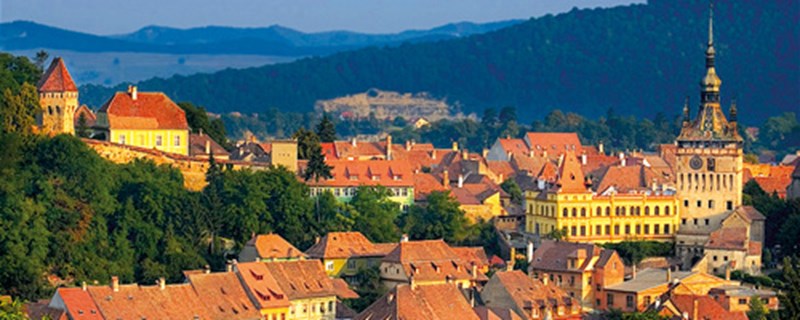
Where?
Transylvania ('beyond the forest' as translated from Latin) is a mountainencompassed region in central Romania, including the Southern Carpathians mountain range of over 2,500m. Due to its isolated setting and history, this ancient province is considered rather Central European than Balkanic, and is only part of Romania since the 20th century.
Why?
Though mainly renowned for its Dracula legend, the heavily forested Transylvaniahas much more to offer, especially its southern part, known as Saxonland - the area comprised of the medieval towns of Sibiu (Hermannstadt), Brasov (Kronstadt) and Sighisoara (Schässburg). Located within what is known to be Europe's real last untamed wilderness, the region is filled with history - reflected in its medieval towns and authentic Saxon villages, built 800 years ago by the German colonists to defend the region from Turkish invasions. It features one of continent's highest concentrations of castles, fortresses and fortified churches (over 150), perched on hills or hidden deep in the mountains. The untouched medieval landscape comprises vast expanses of wild forest and it is an outdoor lover's paradise, with hiking, biking, climbing, horseback riding, whitewater rafting, bear watching and horse sledding. The world-class winter resort of Poiana Brasov is within easy reach whilst the Sighisoara-Tarnava Mare Natura 2000 protected area encompasses Europe's most intact traditional farm grasslands offering rare species. The Transylvanian Carpathians host more big carnivores (brown bears, wolves and lynxes) than the rest of EU countries combined!
How?
The gateway to the charming rural area is Sibiu, even though it is easily reachable from Brasov or Sighisoara as well. The Sibiu International airport provides three direct flights a week to Luton, operated by the low-cost airline Wizz Air. Most of the historical villages and Saxon Transylvania's highlights are within 1 - 1 ½ hour's drive from Sibiu.
What to do and buy there?
The region appeals to those in search of authentic historical village properties, with the Prince of Wales as one of the most renowned (he owns over 10 properties, in Malancrav, Viscri, Valea Zalanului and Breb), but British and Germans typically own homes here, and a few Dutch with summer houses. A few British expats run B&Bs, RV camp sites or even an ecological fruit or honey business. The region has managed to preserve its original medieval feel, completely free of any urban development.
A typical two to four room rural property consists of a thick brick-walled house connected to the neighbour's (for defence purposes) with access via a small wooden gate, with a larger one for the owner's traditional horse-drawn cart. The red tiled roof and thick wooden beams inside give the house the sense of authenticity, and outside a small yard on a 1,000 - 2,000 sqm plot can offer fruit trees and vines and maybe a wooden barn. The area comprises over 100 Saxon villages made of such properties, every one of them boasting a medieval fortified church. Local agent Second Home Transylvania offers a good selection of traditional Saxon properties within historical villages for prices starting from £15,000 for a ready-to-move-in three-room house that needs no renovation. Larger houses (five rooms) might cost £40,000 to £50,000; whilst an historical mansion of the type Prince Charles owns could start at £100,000; or a 23-room castle on plenty of land for only £350,000! Annual property taxes are low, as are closing costs (2-3 per cent). Find more at secondhometransylvania.com.
Must-do
Drive the Transfagarasan mountain road that crosses the Carpathians from Transylvania to Wallachia for breathtaking glacier views. The route rated by the Top Gear TV show as 'the best road in the world, better than Stelvio [the Italian mountain pass previously voted the top drive for petrolheads]' after filming an episode here.
Liz Rowlinson
(This article was first published in A Place in the Sun Magazine Spring 2015 issue 121)

